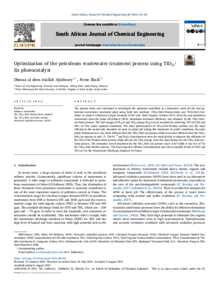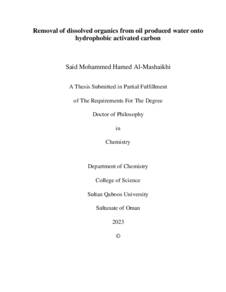Document
Optimization of the petroleum wastewater treatment process using TiO2/Zn photocatalyst.
Identifier
DOI: 10.1016/j.sajce.2021.08.001
Source
South African Journal of Chemical Engineering. v. 38, p. 61-69
Contributors
Shaik, Feroz., Author
Country
Netherlands.
City
Amsterdam
Publisher
Elsevier B.V.
Gregorian
2021-10-01
Language
English
English abstract
The present study was conducted to investigate the optimum conditions in a laboratory work for the real petroleum wastewater treatment plant using both new methods (TiO2/ZnO/Fenton/Solar and TiO2/ZnO/Air/Solar) to remove Chemical Oxygen Demand (COD) and Total Organic Carbon (TOC) from the real petroleum wastewater from the Sohar oil refinery (SOR). Maximum treatment efficiency was obtained by the TiO2/ZnO/air/Solar process. The ZnO dosage of 54 g/L and TiO2 dosage 50 g/L were required for removing 74% of COD and 99% of TOC under optimal conditions. The solar photocatalyst of TiO2/ZnO/Fenton method was the most efficient in the neutral pH, therefore no need to adjust pH during this treatment. In acidic conditions, the solar photo-Fenton process was more efficient than the TiO2/ZnO/air process while it was less efficient than the TiO2/ZnO/air process in (pH>7). The Fe+2 and H2O2 concentration were the main factors to improve the efficiency of the TiO2/ZnO/Fenton/Solar process while pH and the TiO2 dosage were the main factors for the TiO2/ZnO/air/Solar process. The estimated cost of treatment for the TiO2/ZnO/air process was 9 $/m3 while it was 8 $/m3 by the TiO2/ZnO/Fenton process. The final expected effluent concentrations met the acceptable levels of COD and TOC set by the Wastewater Discharge Standard of Oman.
ISSN
1026-9185
Category
Journal articles


